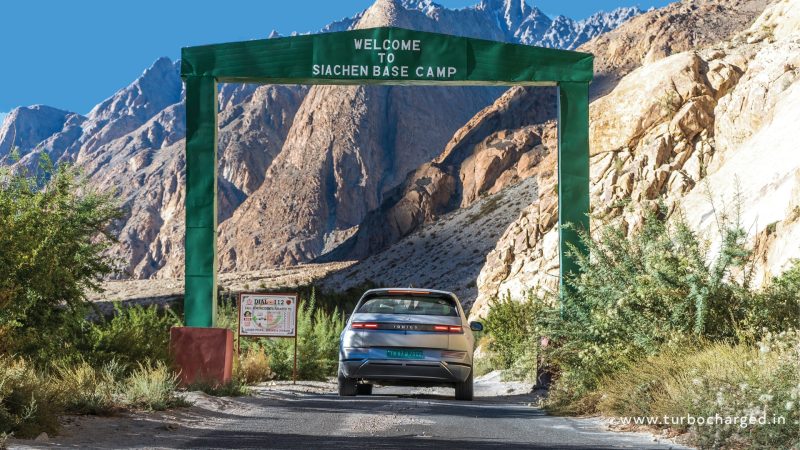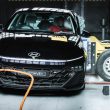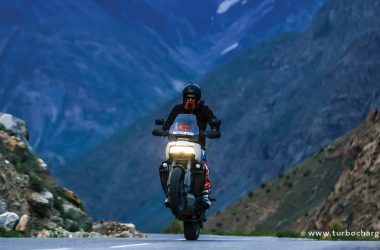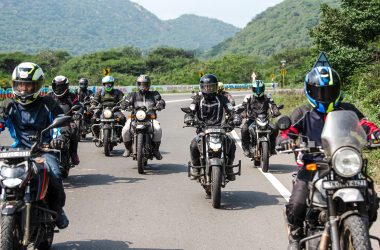Photography: Vaibhav Dhanawade
Amongst all the cars I have driven this year, I think it’s the Hyundai IONIQ 5 that I have driven the most and in the most varied of conditions. Driving it to Longewala in Rajasthan had me drive the IONIQ 5 for well over 2,000km, effectively, also making the IONIQ 5 the first EV to be driven to the country’s hottest border, in peak summers, with the temperatures hitting a scorching 50 degrees Celsius! Following that, the plan was to conquer India’s coldest border at the Siachen Base Camp in the IONIQ 5, to have it become the first EV to be driven to India’s hottest and coldest borders both, another round trip of nearly 2,500km! Of course, then there’s the fact that driving to the Siachen Base Camp, which sits at about 12,000 feet above sea level (and is also the world’s highest battle camp!), was also going to be very different from driving to Rajasthan. Rajasthan is all about flat and vast, arid landscapes that have arrow-straight highways cut through them. Not much of a task in an electric vehicle with not much to worry about except for the searing heat. In hindsight, the IONIQ 5 aced it, delivering an excellent range per charge despite the extreme heat.
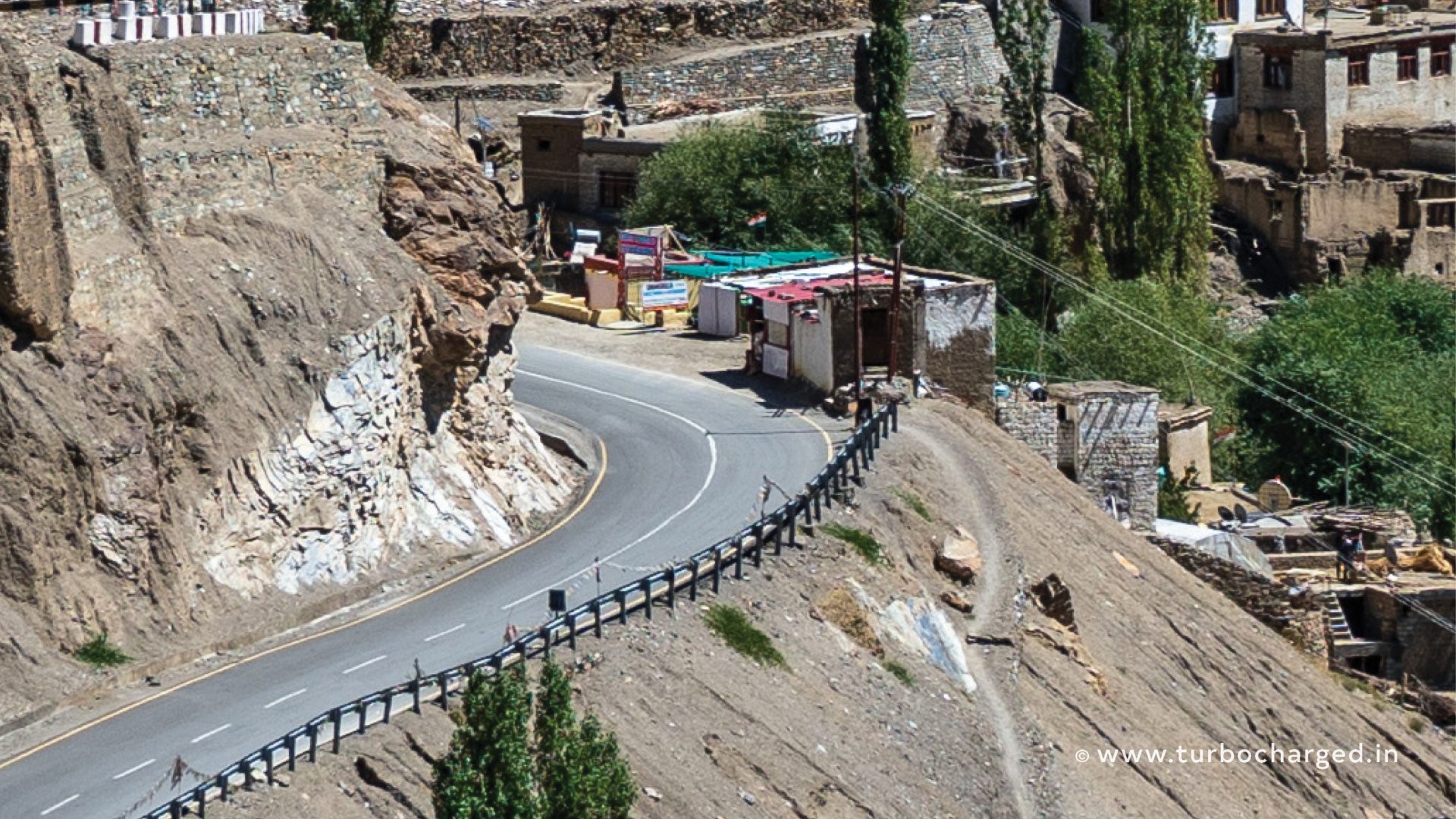
In comparison, driving to Siachen meant battling colder climes, and we all know how quickly batteries – smartphone, cameras or EV batteries – deplete in the cold. And that’s besides having to climb thousands of feet to cross mountain passes, including the formidable Khardung La at almost 18,000 feet! Of course, you don’t need me to tell you how EV batteries despise inclines! When we sat down to plan, I realised this was also going to be one of the most challenging drives I’ve undertaken till date. Because not only is Ladakh cold, it’s also one of the most sparsely populated regions of the country, due to the altitude and extreme weather in winter. For me, this translated to a severe lack of charging infrastructure. The recent floods had wreaked havoc in Himachal Pradesh, particularly around Manali which was on our route, meaning I had to think of an alternate route. The next option was to head up north via Jammu, Srinagar and Kargil to Leh and then towards Siachen. I also figured there are larger cities on this route, meaning more charging stations!
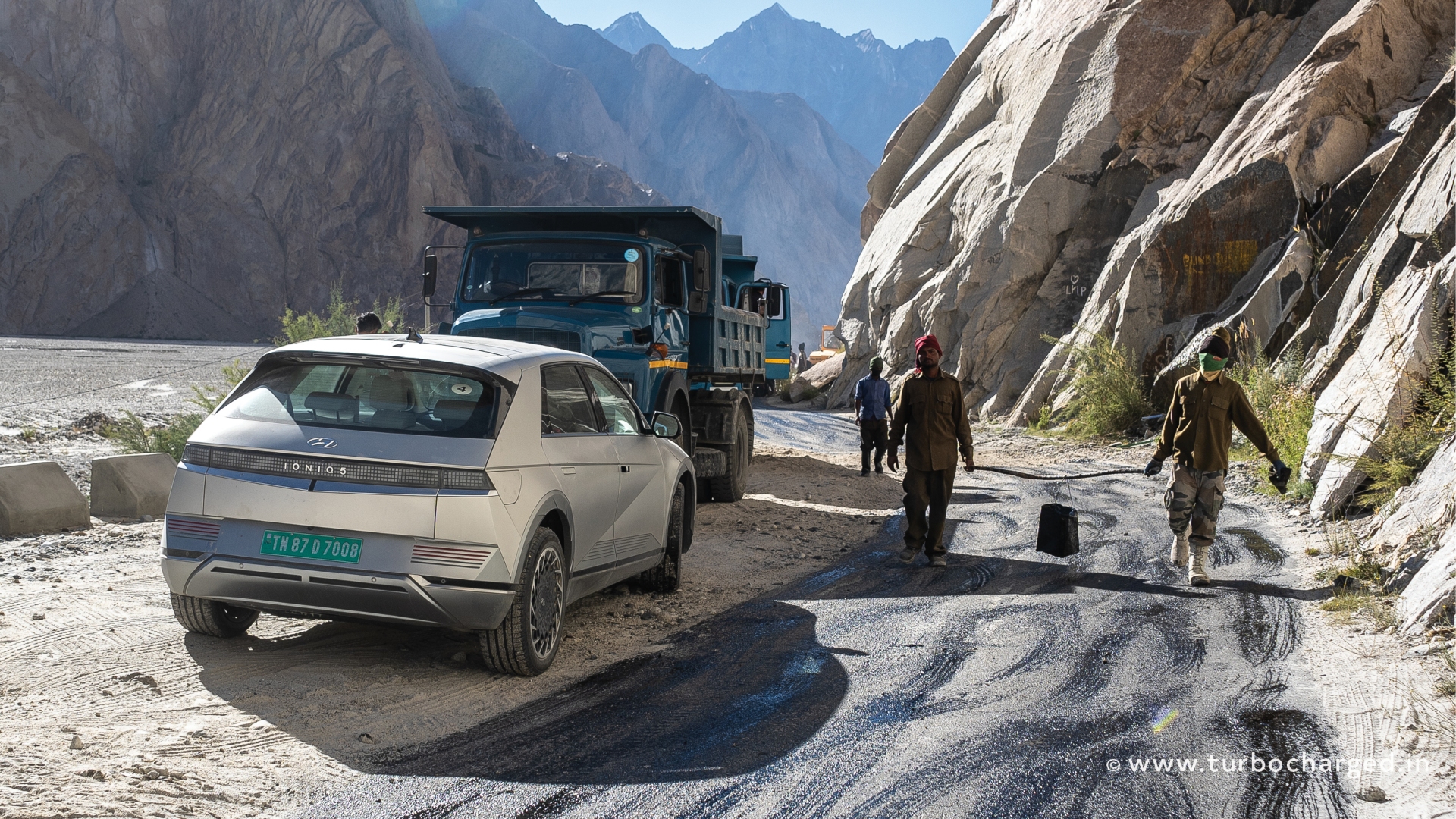
Armed with a battery of charging apps on my phone and a plan in place we set off to conquer India’s coldest border that has temperatures dip below -50 degree Celsius during winters. It’s also a testimony to our soldiers’ resolve to protect the nation, come what may, and besides my own sense of accomplishment I was also looking forward to meeting soldiers posted at the critical location. Driving up to Srinagar was a piece of cake courtesy of the abundance of DC fast charging stations en route, besides which the IONIQ 5 was consistently returning over 450km per charge, with air-conditioning on! The drive to Srinagar made me realise that with a bit of planning, multi-day road trips spanning thousands of kilometres are easily doable in EVs like the IONIQ 5 as the excellent range and rapidly growing charging infrastructure quell range anxiety. The weather was amicable, allowing me to turn the air-conditioning off and enjoy the clean air, thus conserving some charge too.

Srinagar to Leh is about 420km and given the IONIQ 5’s ARAI-certified range of 631km per charge, I was confident of making it on a single charge. But let’s not forget, these are not 4-lane highways in the plains, I was driving in the Himalayas and would be climbing higher altitudes continuously, risking quicker charge depletion! The good news though was that the roads were smooth and allowed rapid progress. Soon after we were climbing up to Zoji La, our first mountain pass, at 11,649 feet and climbing up was a cinch with no loss in performance. The lack of oxygen at these altitudes is the biggest reason behind internal combustion engines losing power. And that means you need to work engines harder, which in turn bumps up exhaust emissions too. That was not the case with the IONIQ 5. As a battery electric vehicle not only are losses in performance zero, tailpipe emissions are zero too as there is no combustion or tailpipe! Another good news was that the other side of Zoji La had me descend towards Drass, driving downhill towards Kargil, meaning I would recover some of the charge lost climbing up to Zoji La!
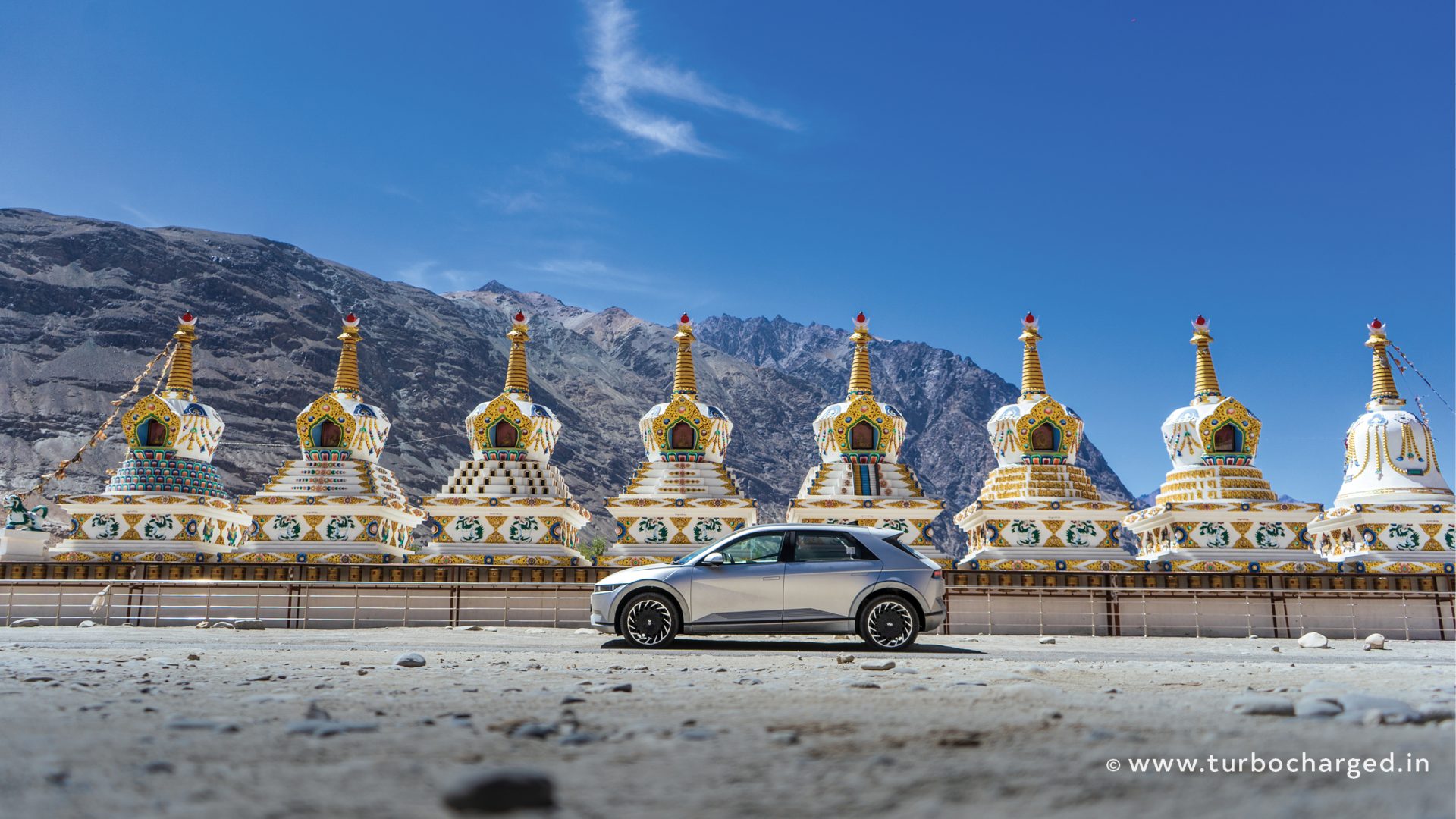
This was made possible by the IONIQ 5’s strong regenerative braking which has three levels, besides which you can turn it off or choose i-Pedal. i-Pedal is the ‘single pedal driving mode’ where regen is strong enough to bring the car to a halt when you take your foot off the throttle, meaning you don’t need to use the brake pedal while also recovering range very quickly. I crossed Kargil with 58 percent charge left, despite having driven for 200km! The IONIQ 5’s energy-efficient powertrain and strong regen were a boon besides the fact that Kargil sits at just 8,700 feet. That said, I was to start climbing up post Kargil to cross Lamayuru that sits at 11,000 feet. Crossing Lamayuru was not a challenge though, I guess, also one of the advantages of having a large, 72.6kWh battery pack. Leh also sits just 400 feet above Lamayuru, which meant I was not going to consume too much charge going forward as I would not be climbing more inclines. What’s truly noteworthy is that the IONIQ 5 is packaged really well as a fully-electric premium SUV and I’m not referring to just the battery pack or regen modes.

It looks very futuristic as the front end and the distinctive-looking headlamps help the IONIQ 5 stand out, as do the 20-inch alloy wheels and unique tail lamp design. And guess what, besides turning heads with its design the IONIQ 5 was doing the same with its green number plates. That’s because not many people expect seeing an electric car in some of the remotest parts of the country and at some of the highest altitudes possible! Its interiors impress too, especially with their spaciousness, futuristic design and practicality. The single glass slab housing the high-resolution displays for the instrument cluster and infotainment screen looks classy, while the steering wheel has a unique design. The IONIQ 5 is also high on features and is equipped with electric adjustment for both front seats, also recline and slide functions for the rear seats. You also get ventilated front seats, heated rear seats, multiple USB ports at the front and rear, Apple CarPlay and Android Auto connectivity, a panoramic sunroof with a unique central opening, Hyundai’s Bluelink connected technology, Level 2 ADAS and six airbags to round it all off.

I finally made it to Leh, with 16 percent charge and a range of 48km left! It’s the strong regenerative braking that had made it possible, without me having to worry about charge. That was stage 1 of our mission accomplished successfully! I’d marked out charging stations in the city of Leh beforehand, of which the Hyundai dealership (Togo Hyundai) was my best bet, armed with a 7.2kW charger that would recharge the battery pack overnight. I drove in, plugged the charger and heaved a sigh of relief knowing the IONIQ 5 will be charged fully overnight before our big day. I’d be lying if I said I wasn’t tossing and turning that night in my hotel room – I’ve been to Khardung La several times but this would be the first time in an EV, besides the plan to drive up to Siachen! The next morning, with a little prayer on my lips, I was on my way towards Khardung La. Roads leading up to the mountain pass that sits at 17,982 feet used to be non-existent but the BRO (Border Roads Organisation) has worked very hard for years and the drive up is a piece of cake today. The IONIQ 5 was complimenting the hill climb well, sitting on Hyundai’s E-GMP platform. It doesn’t just look sporty, the IONIQ 5 is also engaging to drive. And given that electric powertrains are unaffected by high altitudes, the outputs of 217PS and 350Nm were making it an excellent set of wheels in the mountain twisties.

Khardung La is just 40km from Leh but you climb nearly 6,000 feet over the short distance, which gets dizzying. Khardung La also used to be the world’s highest motorable road before Umling La came up and is still the second highest in the world! As we summitted the pass, I was glad about having reached a critical milestone. Getting to Khardung La was also a huge achievement because every single internal combustion engine-powered vehicle is left gasping for air at the altitudes that I was driving at, but not the IONIQ 5. It was also one of the first few EVs to make it up there and certainly the first IONIQ 5! I’d lost 22 percent charge in 40km and had a range of 383km left. The good news though was that the other side of Khardung La is a steep downhill drive, helping me recover lost charge double quick. Within the next 5 kilometres, I had recovered over 20km worth of range. Effectively I had over 400km of driving range left, while the distance to Siachen Base Camp, sans any uphill sections, was just about 150km!
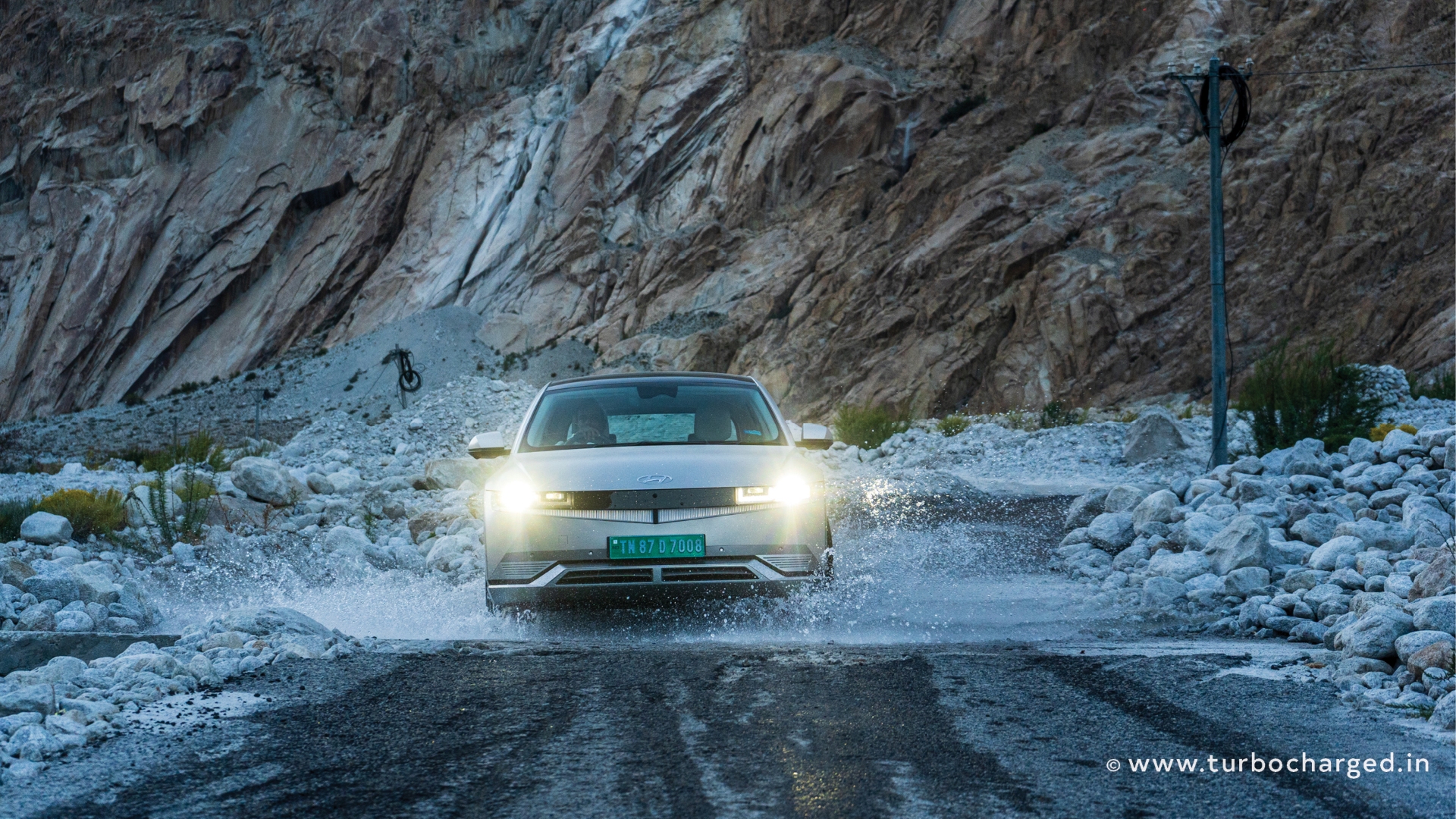
Another concern with EVs is the ground clearance but even fully loaded the IONIQ 5 sits 163mm above the ground and was clearing broken sections without any scraping. It also runs on 20-inch wheels shod with 255-section tyres that have an aspect ratio of 45, but the ride quality is excellent thanks to the well-tuned suspension, even on broken roads. I was also enjoying the sights of Nubra Valley, one of the most picturesque parts of Ladakh and definitely one of the most beautiful places on the planet. It is virtually untouched and pristine and is home to just a few villages and this is Ladakh at its prettiest! The land throughout Nubra Valley is also flat, meaning the IONIQ 5 was not spending more energy than needed. As I passed the first arch welcoming us to Siachen Base Camp, I realised I was minutes away from creating history, as the IONIQ 5 was about to become the first electric vehicle to have conquered India’s hottest and coldest borders both.
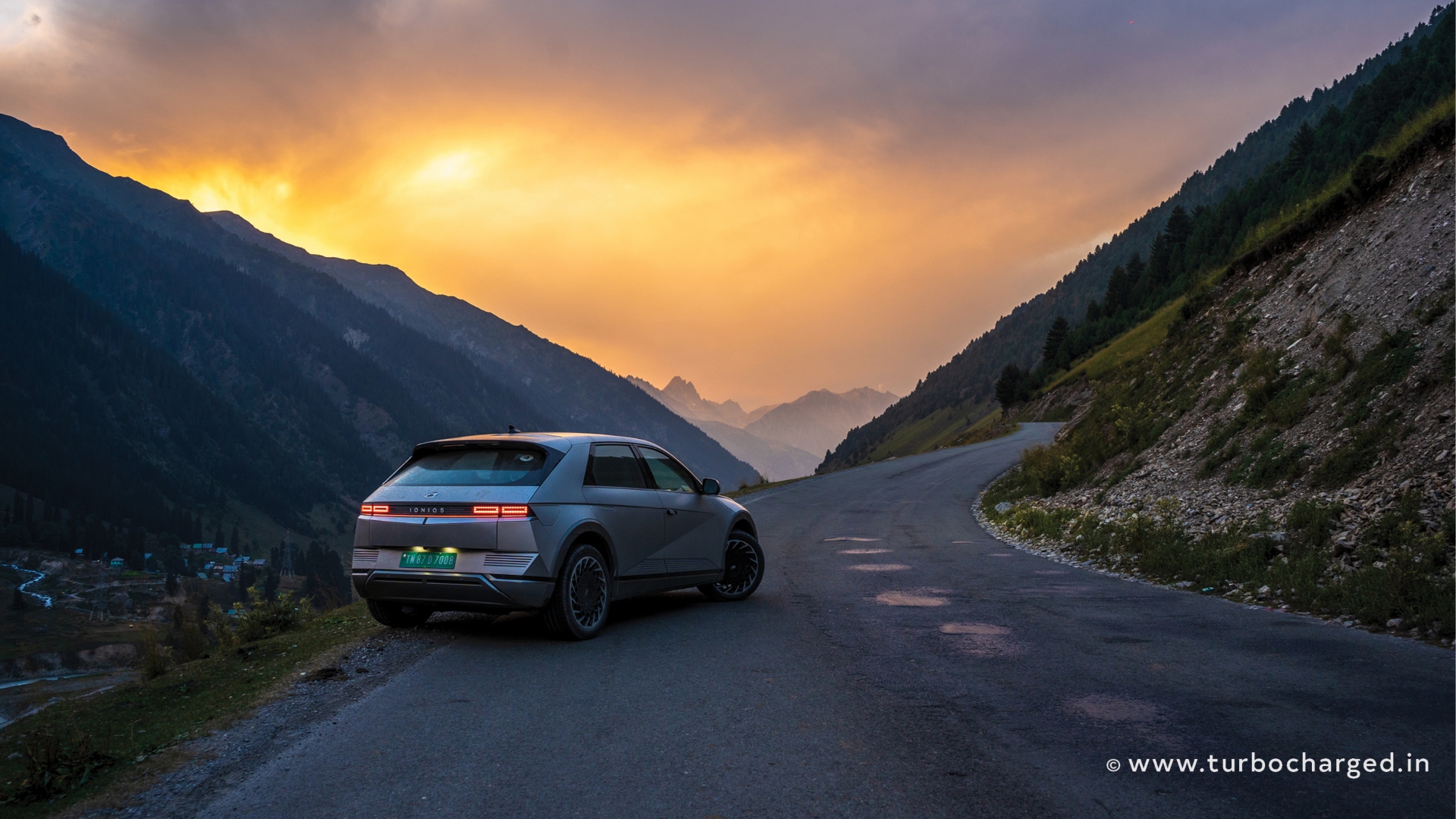
This was a huge testament to Hyundai’s engineering, as the IONIQ 5 had braved some of the toughest driving conditions in the world and not just in India! I was soon at the last civilian point at Siachen Base Camp and admittedly, I’ve been on countless roadtrips over the years, but this was special. Driving to the Siachen Base Camp was a roadtrip unlike any other and was far more challenging than driving the IONIQ 5 to the hottest border in peak summers. I had to make some wild calculations given the cold weather, steep inclines and lack of oxygen at those altitudes but the IONIQ 5 shined bright with its performance, comfort and energy-efficient powertrain. I still had over 60 percent charge left despite driving for 200km and had ‘only’ 200km to drive back to Leh, which I did, without a hitch. In fact, on my way back I was at Khardung La top with a range of 83km but by the time I reached Leh city, I had a range of 130km thanks to the steep downhill climb! This one is certainly for the record books!





